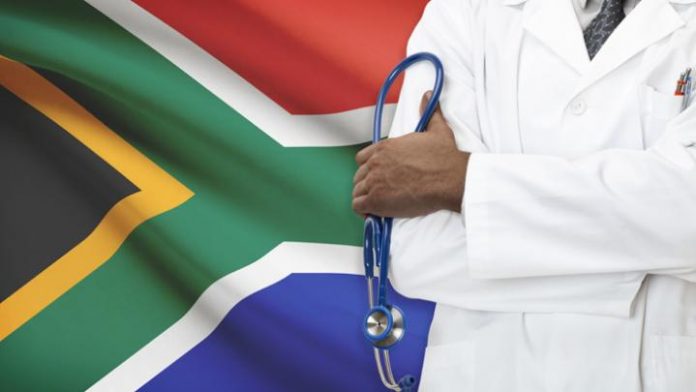South Africa has a dream of universal healthcare, but reality means that it is far away.
Free and equitable access for all citizens to good and affordable healthcare in South Africa remains out of reach, with 84% of the population – 45 million poor, mainly black women, men, and children – relying on over-burdened and under-resourced state facilities. The rest, 9 million medical scheme members, have access to good but very expensive private hospitals. Even though private health care is only available to a very small section of the South African society (16.3%), it accounts for a disproportionate 52% of the total expenditure on health care.
The quality of care in this two-tier system varies enormously. Government clinics and hospitals, where people pay for services based on income, struggle with a persistent lack of funding, poor management of scarce resources, chronic drug stock-outs, shortages of equipment and specialists, and ailing infrastructure.
Private healthcare facilities in South Africa are accessible to those with health insurance or money, are less busy, more efficiently run, and much better resourced. Care has become increasingly expensive due to an unregulated and fragmented system that compensates doctors based on the number services provided, and not on the quality of care. Private doctors are competing with each other for services and income, leading to much inefficiency.
Private health insurance is getting more expensive, with a 10% increase each year. Despite policy initiatives aimed at structuring affordable low cost health care funding products, medical schemes have remained unaffordable, and therefore inaccessible, to the majority of South Africans.
The planned National Health Insurance scheme plans to pool private and state health resources – including hospitals, clinics, funding and medical staff – together, and doing away with the division between the two systems. How this will be done and how people will be enrolled, is still unclear.
Six working groups are dealing with various existing gaps and questions, including the extent of the fund’s benefits, the future of medical schemes, and the pooling of resources.
The ultimate objective is of giving every South African and long-term resident – regardless of socio-economic status – access to the same comprehensive, quality essential healthcare provided free of charge. People will be expected to pay for non-essential procedures by cash or extra insurance.
The cost was set in 2010 at ₤15 billion a year. How this will be funded, by whom, when, and how potential shortfalls will be dealt with, is not decided. South Africa has 21 million unemployed, 5 million taxpayers and a growing budget deficit – so how free medical care for all will be paid for is unclear.
The NHI will cover essential care, with private medical insurance serving as top-up providers for whatever is not covered. What exactly the NHI will not cover is not defined yet.
There is strong opposition from two powerful and profitable sectors- private healthcare and health insurance.
It may take ten or twenty years to get universal healthcare, but the government is determined that it will happen.








 ©2024 All rights reserved LaingBuisson
©2024 All rights reserved LaingBuisson 


